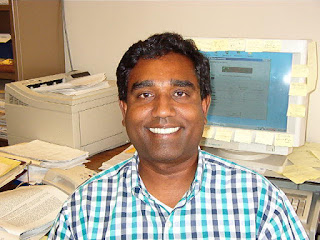UCR physicist demonstrates how light can be used to remotely operate micromachines. Light changes the Casimir force, a weak attraction between close objects, says Umar Mohideen
| Related books on this topic Researchers and graduate students in solid-state, molecular, nuclear, and chemical physics will be introduced to the broad picture as well as many particulars of the field. | The Casimir force results when the properties of “virtual photons” are modified. While a photon is the carrier particle of electromagnetic interactions, a virtual photon is a particle that exists for so brief an instant as an intermediary in a process that it can never be directly observed. Because virtual photons are ever-present in empty space, studying the Casimir force allows physicists to learn the properties of the quantum nature of space. In their study, Mohideen and his colleagues used a ball and a flat plate to simulate two parallel plates. “Where the ball and plate are close to each other, the surfaces are considered to be almost parallel at microscopic distances,” said Mohideen, a professor of physics in the Department of Physics and Astronomy. |
In one such experiment, the researchers used a plate of silicon, a material commonly used in the semiconductor industry, and measured the “carrier density” or the number of electrons in the plate.
They then compared the Casimir force that arose each time between the gold ball and a series of silicon plates of different carrier densities. They found that the Casimir force was measurably different between the ball and any two silicon plates only when the carrier density of one plate was at least 10,000 times larger than the carrier density of the second plate.
“We then asked ourselves if it was possible to bring about this density difference in other ways,” Mohideen said.
The researchers next experimented with the gold ball and a silicon plate with identical carrier densities. Training a beam of light on the plate, they were able to change the plate’s carrier density by an amount that was enough to change the Casimir force between the plate and the ball.
When light is absorbed by silicon, photons are converted into positive and negative charges, Mohideen explained. It is the increase in the number of electrons (negative charges) that increases the Casimir force.
“Using this result, it should be possible now to make special probes that can check for changes in electron density,” he added. “It can be used, too, to make new micromachines that can be remotely operated simply by using light.”
Micromachines find applications in complex systems of tiny gears and levers. They are used to reroute light between optical fibers in optical communication. They also are used in accelerometers that can trigger an airbag in an accident.
“Because of the sensitivity associated with light, we can match theory with experiment with much more precision at a very small scale,” Mohideen said. “This would help physicists better understand how a theory called the Lifshitz theory should be applied in experiments on the Casimir force.”
The Lifshitz theory predicts that the strength of the Casimir force between two surfaces is dependent on the distance between the surfaces (the smaller the distance, the greater the force). The theory also predicts how the number of electrons in the surface changes the force, and gives an explanation of how virtual photons interact with electrons.
Next in their research, the physicists plan to improve the sensitivity of their experiments using more precise detection techniques. They will attempt, too, to understand exactly how electrons and virtual photons interact. ###
The researchers’ study of the effect of light on the Casimir force appeared in the April 16 issue of Optics Express. Mohideen’s coauthors are F. Chen, UCR; G. L. Klimchitskaya, North-West Technical University, St. Petersburg, Russia; and V. M. Mostepanenko, Noncommercial Partnership “Scientific Instruments,” Moscow, Russia. The National Science Foundation and the U.S. Department of Energy provided support.
Work by Mohideen’s team on how the Casimir force changes when a threshold carrier density difference is reached appeared in Physical Review Letters in October 2006.
Related Links: Contact: Iqbal Pittalwala iqbal@ucr.edu 951-827-6050 University of California - Riverside
Technorati tags: Public Domain Clip Art and clip art or public domain and Father's Day Banners or world's greatest dad and dads or Prof pioneers new field in nanotechnology or Father's Day Banners and Republican presidential Debate MANCHESTER, New Hampshire 06/05/07















No comments:
Post a Comment